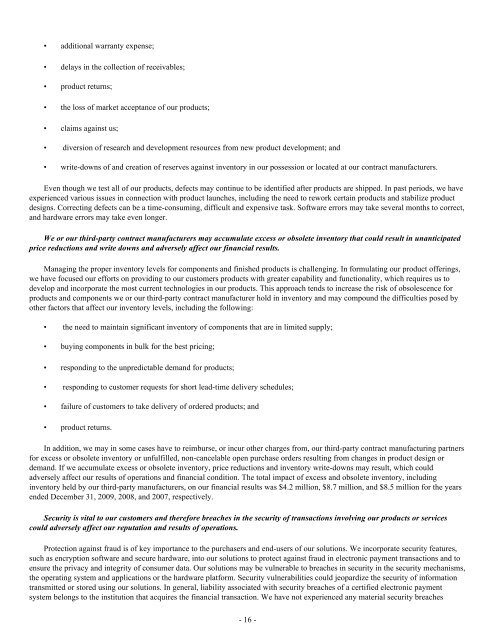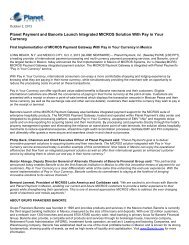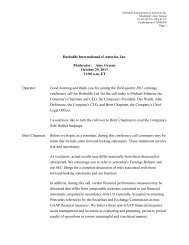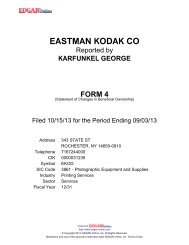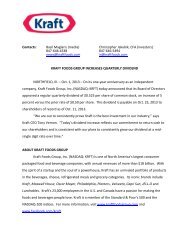Hypercom Corporation Annual Report - CiteSeer
Hypercom Corporation Annual Report - CiteSeer
Hypercom Corporation Annual Report - CiteSeer
You also want an ePaper? Increase the reach of your titles
YUMPU automatically turns print PDFs into web optimized ePapers that Google loves.
• additional warranty expense;<br />
• delays in the collection of receivables;<br />
• product returns;<br />
• the loss of market acceptance of our products;<br />
• claims against us;<br />
• diversion of research and development resources from new product development; and<br />
• write-downs of and creation of reserves against inventory in our possession or located at our contract manufacturers.<br />
Even though we test all of our products, defects may continue to be identified after products are shipped. In past periods, we have<br />
experienced various issues in connection with product launches, including the need to rework certain products and stabilize product<br />
designs. Correcting defects can be a time-consuming, difficult and expensive task. Software errors may take several months to correct,<br />
and hardware errors may take even longer.<br />
We or our third-party contract manufacturers may accumulate excess or obsolete inventory that could result in unanticipated<br />
price reductions and write downs and adversely affect our financial results.<br />
Managing the proper inventory levels for components and finished products is challenging. In formulating our product offerings,<br />
we have focused our efforts on providing to our customers products with greater capability and functionality, which requires us to<br />
develop and incorporate the most current technologies in our products. This approach tends to increase the risk of obsolescence for<br />
products and components we or our third-party contract manufacturer hold in inventory and may compound the difficulties posed by<br />
other factors that affect our inventory levels, including the following:<br />
• the need to maintain significant inventory of components that are in limited supply;<br />
• buying components in bulk for the best pricing;<br />
• responding to the unpredictable demand for products;<br />
• responding to customer requests for short lead-time delivery schedules;<br />
• failure of customers to take delivery of ordered products; and<br />
• product returns.<br />
In addition, we may in some cases have to reimburse, or incur other charges from, our third-party contract manufacturing partners<br />
for excess or obsolete inventory or unfulfilled, non-cancelable open purchase orders resulting from changes in product design or<br />
demand. If we accumulate excess or obsolete inventory, price reductions and inventory write-downs may result, which could<br />
adversely affect our results of operations and financial condition. The total impact of excess and obsolete inventory, including<br />
inventory held by our third-party manufacturers, on our financial results was $4.2 million, $8.7 million, and $8.5 million for the years<br />
ended December 31, 2009, 2008, and 2007, respectively.<br />
Security is vital to our customers and therefore breaches in the security of transactions involving our products or services<br />
could adversely affect our reputation and results of operations.<br />
Protection against fraud is of key importance to the purchasers and end-users of our solutions. We incorporate security features,<br />
such as encryption software and secure hardware, into our solutions to protect against fraud in electronic payment transactions and to<br />
ensure the privacy and integrity of consumer data. Our solutions may be vulnerable to breaches in security in the security mechanisms,<br />
the operating system and applications or the hardware platform. Security vulnerabilities could jeopardize the security of information<br />
transmitted or stored using our solutions. In general, liability associated with security breaches of a certified electronic payment<br />
system belongs to the institution that acquires the financial transaction. We have not experienced any material security breaches<br />
- 16 -


